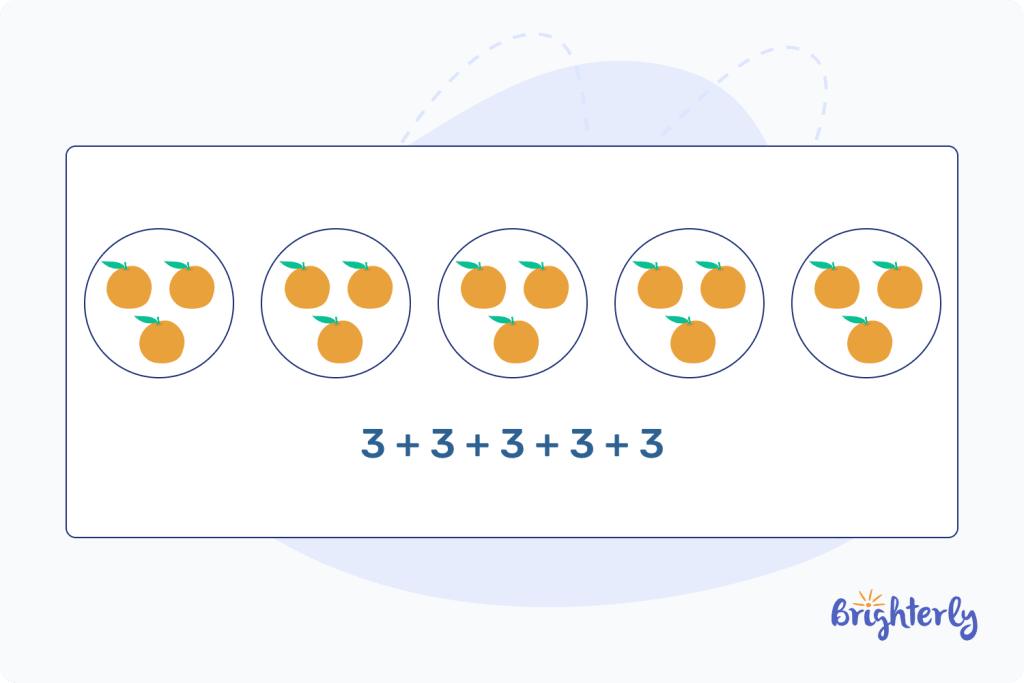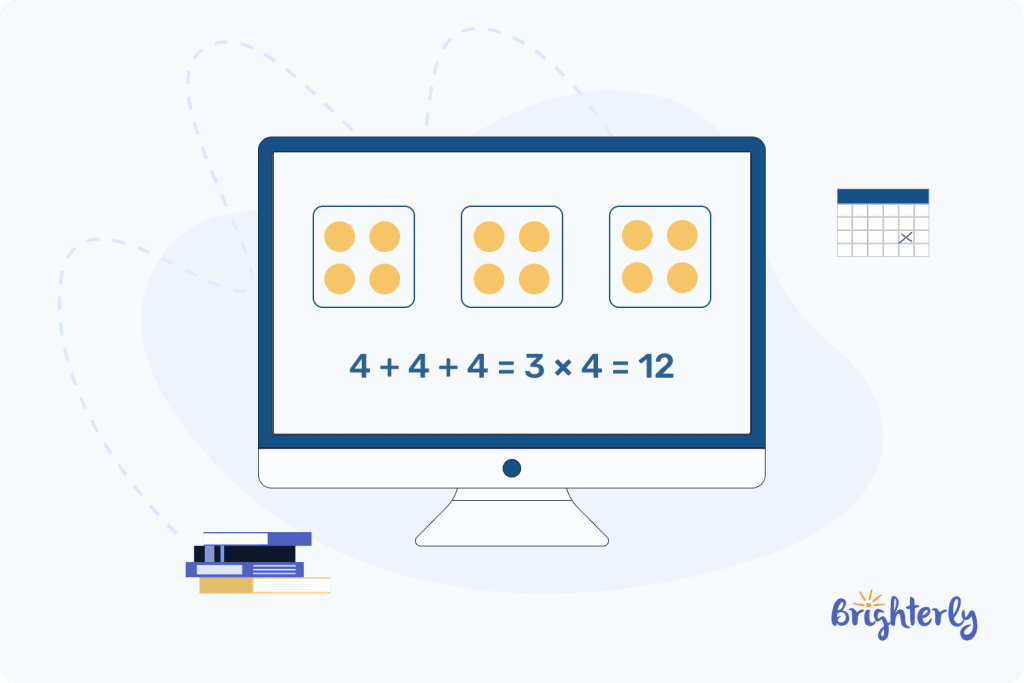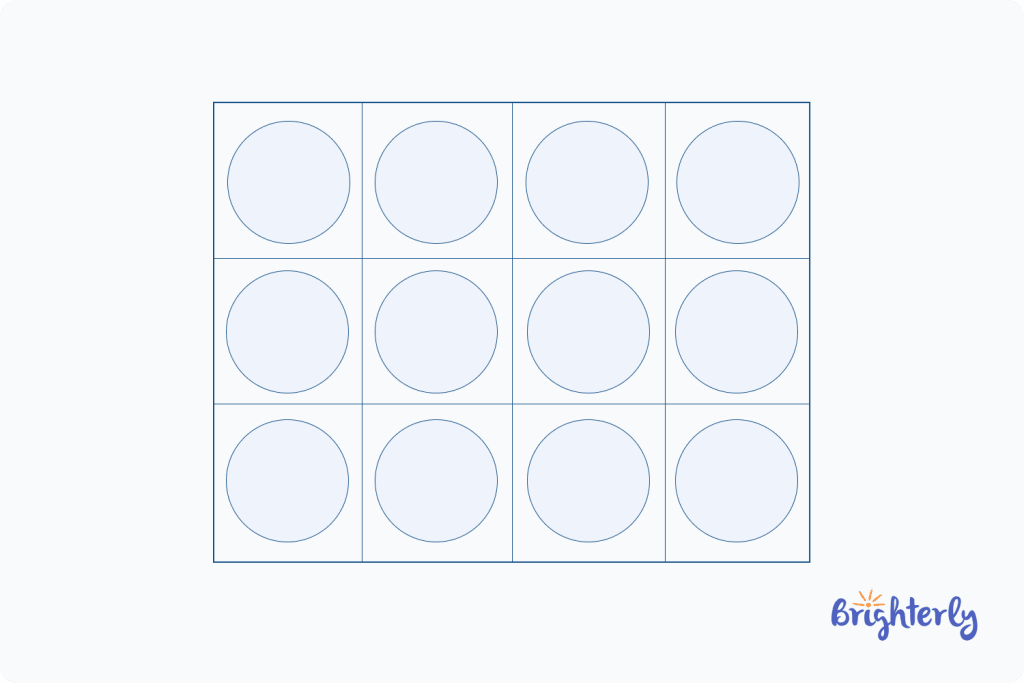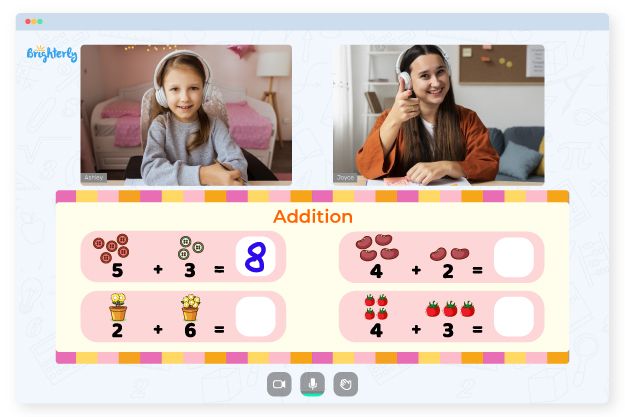Repeated Addition – Definition, Examples, Practice Problems, FAQs
Updated on December 11, 2024
Repeated addition is a form of addition where we find the total value of a number when it occurs in multiple places or to see the total of two or more equal groups.
In this article, we answer your questions like ”What does repeated addition mean?” and “How to calculate with it?” to help with repeated addition for grade 2.
Keep learning!
What is Repeated Addition?
Repeated addition is a mathematical process of adding the same number repeatedly. For instance, in the image below, we do the repeated addition equation for strawberries in 5 groups of 4:

Per the image, we add each group of 4, resulting in 4 + 4 + 4 + 4 + 4 = 20.
Repeated addition: definition
Repeated addition is a form of skip-counting where we add the same number continuously. It can also be defined as the sum of two or more equal groups
Repeated addition example
Here are some repeated addition examples:
6 groups of animals with 6 cats in each group can be calculated with repeated addition as 6 + 6 + 6 + 6 + 6 + 6 = 36.
This means there are 36 cats in these groups.
Another example is if there are 3 bags with 7 coconuts in each. We can count the number of coconuts through repeated addition as 7 + 7 + 7 = 21.
Connection of Repeated Addition with Multiplication
By now, you may have noticed the similarities between multiplication and repeated addition. Just like repeated addition, multiplication also involves finding the total of the same group of numbers — however, through a shorter, more condensed medium.

Think of repeated addition as what happens backstage when we multiply. For instance, when we do 7 x 5 = 35, we get the same answer if we solve the repeated addition of 7 five times or 5 in seven groups:
7 + 7 +7 + 7 + 7 = 35 OR 5 + 5 + 5 + 5 + 5 = 35.
In the same way, we can solve multiplication problems by switching the places of the numbers without affecting the result, we can also answer questions with repeated addition by switching the places of the numbers without changing the answer.
For example, if Max sees 6 oranges in 10 baskets, he can find the total number of oranges by doing:
6 x 10 = 60 / 10 x 6 = 60 (for multiplication)
OR
6 + 6 + 6 + 6 + 6 + 6 + 6 + 6 + 6 + 6 = 60 / 10 + 10 + 10 + 10 + 10 + 10 = 60
Also, we can use repeated addition for multiplication to make multiplying easier such as when multiplying large numbers. An example is if we were to do 40 x 5, we can solve it in repeated addition as 40 + 40 + 40 + 40 + 40 = 200.
Note that this technique works for smaller numbers as well.
How to Teach Repeated Addition
3rd-grade repeated addition is not a complex topic in math — in contrast, it is quite interesting. This means teaching it can be a fun process and here are some tips to make it so:
- Objects and toys: Children love to explore the world with their senses, so teaching with a visual approach and building a hands-on environment can make learning easier. Begin by grouping the objects and encourage the child to count the objects in each group, then add each group together.
- Drawings and pictures: With illustrations, the child can visualize how the repeated addition equation works.
- Real-life scenarios: You can help the child understand how repeated addition applies to real life by creating word problems around relatable situations.
Examples of Repeated Addition
Solved Math Problem 1
In the array below, which of these examples is an error of addition by one?

- 12
- 14
- 13
- 18
Solution
The option with the error of addition by one is 13.
| This means the correct amount of circles in the array is 12. |
Solved Math Problem 2
Ana distributes cookies to her 5 friends by giving each of them 8 cookies. With repeated addition how many cookies did she give out in total?
Solution
| There are two ways to calculate this problem: We can either do it as 8 + 8 + 8 + 8 = 40 or 5 + 5 + 5 + 5 + 5 + 5 + 5 + 5 = 40. |
For the first approach, we do a repeated addition of the 8 cookies by the 5 friends, and for the second approach, we do a repeated addition of the 5 friends by the 8 cookies.
Solved Math Problem 3
In a classroom of 9 students, each student is given 2 pencils;
- How can we use repeated addition to find the number of pencils they have been given?
- Will the answer be different if we use multiplication?
Solution
|
Repeated addition: Practice Problems
Frequently Asked Questions
Is repeated addition the same as multiplication?
Yes. Think of repeated addition as multiplication with extra steps. For instance, 8 x 4 is the same as doing repeated addition for 8 in 4 places (8 + 8 + 8 + 8). Both equations result in 32.
How can repeated addition help in everyday life?
Repeated addition helps make counting easier because it employs the skip count technique. In math, it can also help learners with large or complex multiplication of numbers.
Can you model repeated addition with an array?
Yes. An array is a table that organizes elements in rows and columns. With an array, we can model repeated addition by putting the numbers in rows and columns. For instance, if we were to do a repeated addition of 3 in 4 groups, we can count from 1 in 3 rows and continue counting till we have 4 columns. This will result in 12.






